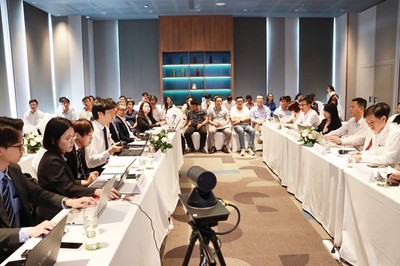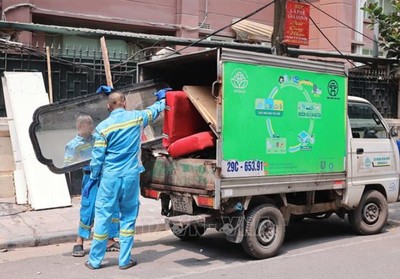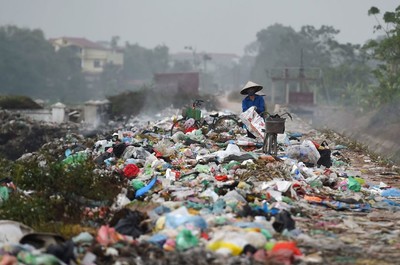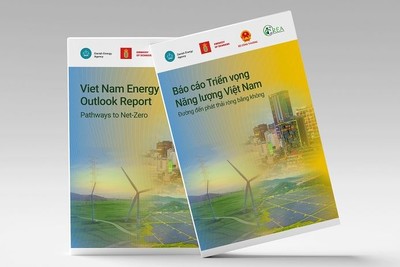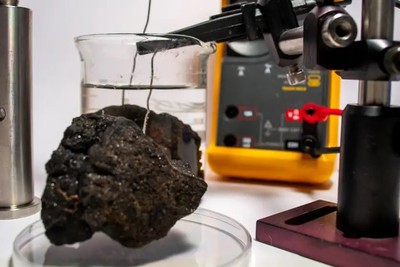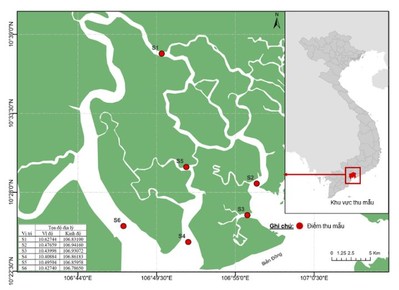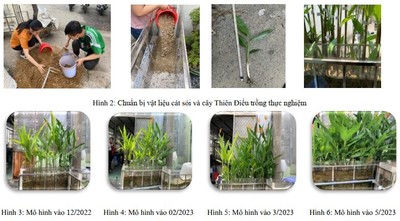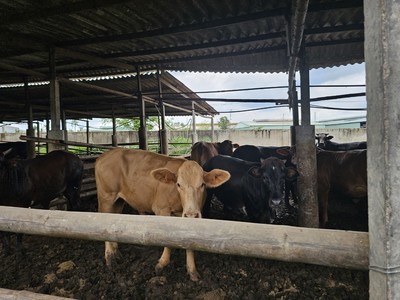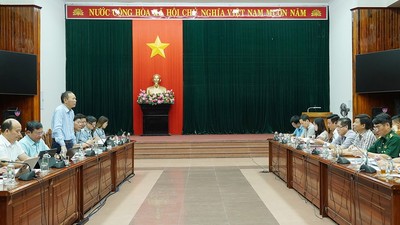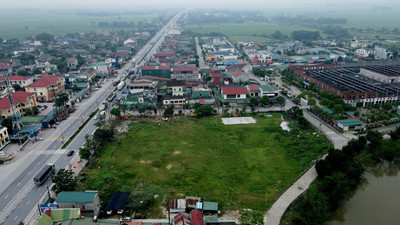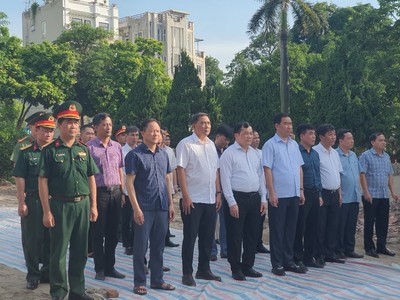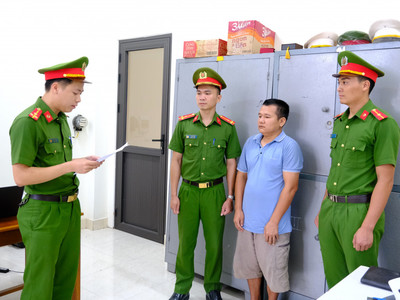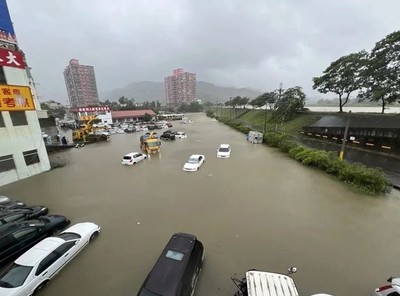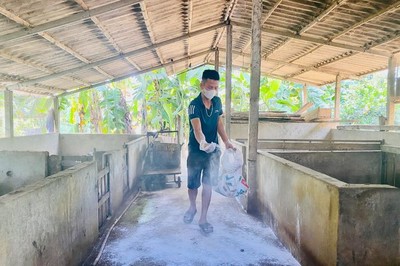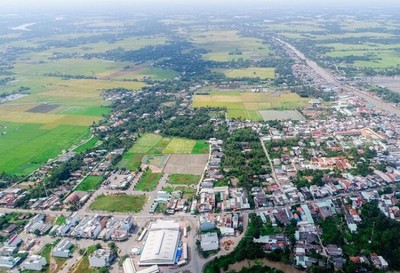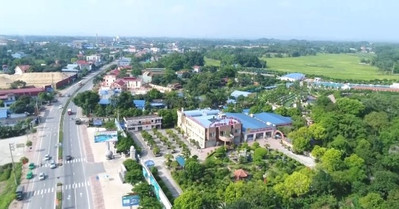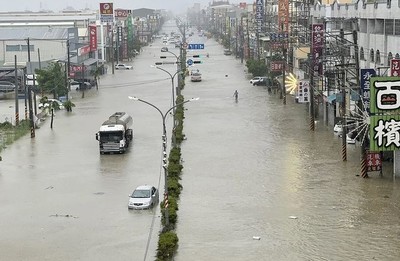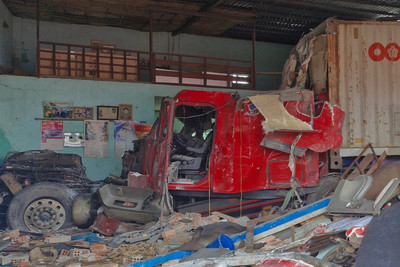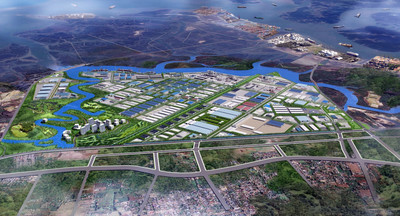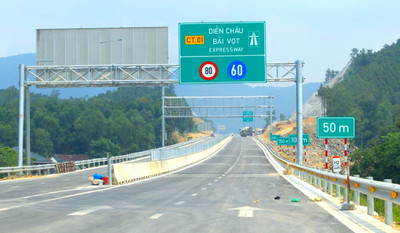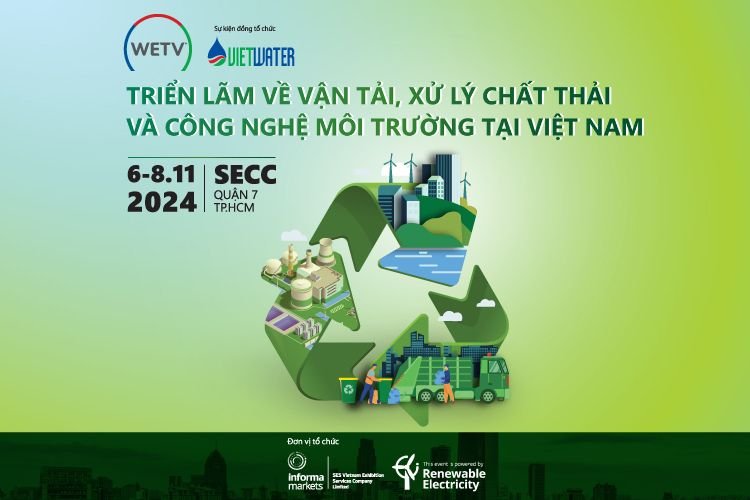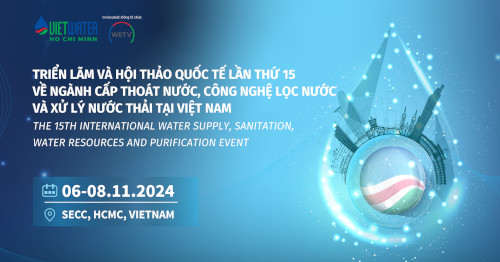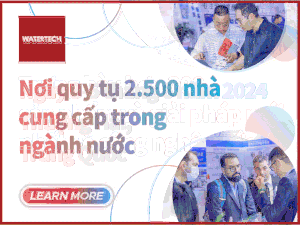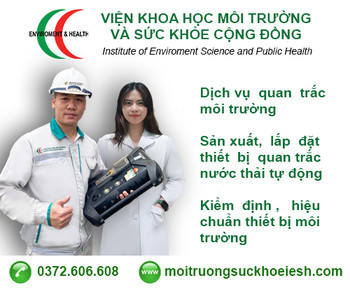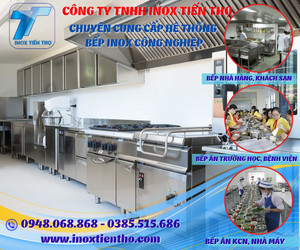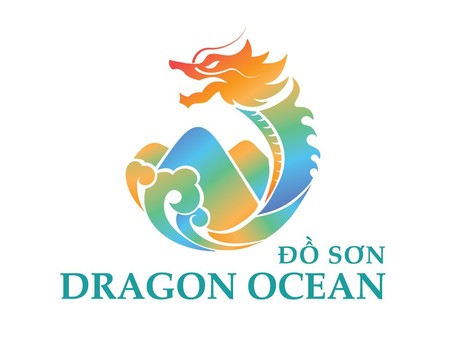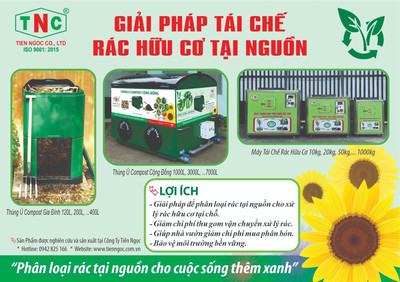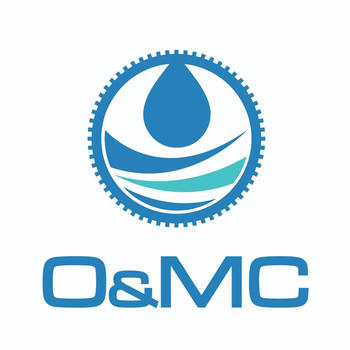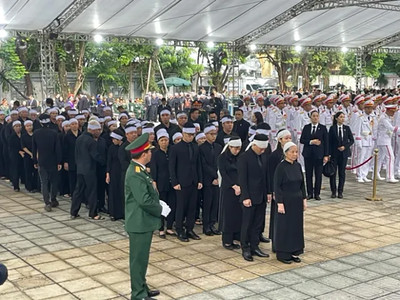Công bố quốc tế lĩnh vực môi trường số 34-2022
Trân trọng giới thiệu tới quý độc giả Công bố quốc tế lĩnh vực môi trường số 34 - 2022 với những nội dung chính như sau:
Về quản lý môi trường
- Tóm tắt dữ liệu từ chương trình điều tra hóa chất của UKWIR và so sánh dữ liệu từ việc giám sát chất lượng nước thải trong mười năm qua.
- Một cách tiếp cận giám sát chiến lược để học tập cải thiện cơ sở hạ tầng tự nhiên.
- Những đóng góp của thiên nhiên trong việc đối phó với đại dịch ở thế kỷ 21: Bản tường thuật đánh giá bằng chứng trong COVID-19.
- Phân bổ nguồn PM2.5 ở Seoul, Hàn Quốc và Bắc Kinh, Trung Quốc sử dụng PMF chuẩn hóa phân tán.
- Tận dụng nền kinh tế tuần hoàn: Đầu tư và đổi mới làm động lực.
- Trách nhiệm xã hội của doanh nghiệp có ảnh hưởng đến sự lan tỏa rủi ro giữa thị trường giao dịch khí thải carbon và thị trường chứng khoán không?
- Sự phát triển năng động theo không gian-thời gian của cường độ phát thải carbon và hiệu quả của việc giảm phát thải carbon ở cấp hạt dựa trên dữ liệu ánh sáng ban đêm.
- Mạng lưới sản xuất bền vững: Một phương pháp luận thiết kế dựa trên sự hợp tác giữa các bên liên quan.
- Các kế hoạch tối ưu hóa để quản lý rõ ràng về mặt không gian đối với các lưu vực nhỏ dựa trên các dịch vụ của hệ sinh thái.
- Áp dụng các công nghệ quản lý rác thải sinh hoạt mới: Vai trò của các khuyến khích tài chính và hành vi vì môi trường.
Về môi trường đô thị
- So sánh mức độ phơi nhiễm của con người với vật chất hạt mịn ở các nước có thu nhập thấp và cao: Đánh giá có hệ thống các nghiên cứu đo mức độ phơi nhiễm PM2.5 của cá nhân.
- Các ứng dụng trí tuệ nhân tạo cho thực hành quản lý chất thải rắn bền vững ở Úc: Đánh giá có hệ thống.
- Sự tập hợp và hoạt động của màng sinh học trên nhựa trong các dòng chảy đô thị ở quy mô lục địa: Đặc điểm của vị trí quan trọng hơn loại chất nền.
- Lấy mẫu thụ động để giám sát nước thải quy mô bệnh truyền nhiễm: Bài học kinh nghiệm từ COVID-19.
- Ước tính phát thải khí nhà kính từ nước thải sinh hoạt ở Nepal: Phân tích dựa trên kịch bản áp dụng cho các nước đang phát triển.
- Cải thiện việc loại bỏ sinh học các hợp chất có hoạt tính dược phẩm và hoạt tính estrogen trong lò phản ứng sinh học màng thẩm thấu kỵ khí ưa khí xử lý nước thải đô thị.
- Đánh giá tác động môi trường và các phản ứng chính sách đối với di chuyển hàng không đô thị: Một nghiên cứu điển hình về khu vực đô thị Seoul.
- Sự tương tác giữa Chlorococcum sp. GD và vi khuẩn bản địa trong quá trình xử lý nước thải đô thị.
- Mô hình dự báo đồng nhất đa tỷ lệ về bề mặt ngập lụt ở các thành phố đô thị bằng cách sử dụng AI sâu cảm ứng vật lý với UPC.
- Các con đường để du lịch thích ứng với biến đổi khí hậu ở một điểm đến đô thị - Các minh chứng dựa trên điều kiện nhiệt cho Vùng đô thị Porto (Bồ Đào Nha).
Về môi trường khu công nghiệp
- Điều tra hiệu quả sinh thái của ngành dệt may Trung Quốc dựa trên phân tích cấp công ty.
- Hóa trị và khử nhiễm bùn công nghiệp thông qua chiết xuất lipid và loại bỏ kim loại nặng bằng cách sử dụng chất lỏng ion protic chi phí thấp.
- Tăng cường tác động của các chất hữu cơ hòa tan bị rửa trôi từ bùn thải đối với việc giảm vi sinh vật và cố định Cr (VI) bởi Geobacter sulfurreducens.
- Lịch sử phát triển và triển vọng kết hợp chặt chẽ giữa công nghệ xúc tác quang và công nghệ sinh học để xử lý chất ô nhiễm trong nước thải: Đánh giá.
- Một phân tích tổng hợp toàn cầu về ô nhiễm kim loại nặng (loid) trong đất gần các mỏ đồng: Đánh giá mức độ ô nhiễm và rủi ro sức khỏe có thể xảy ra.
- Các con đường cố định carbon lõi liên quan đến sự phát triển lớp bánh trong lò phản ứng sinh học màng sinh học thiếu khí-oxic xử lý nước thải dệt nhuộm.
- Tẩy xanh trong ngành công nghiệp kim loại Hoa Kỳ? Một cách tiếp cận mới kết hợp nồng độ SO2 từ dữ liệu vệ tinh, cơ sở dữ liệu công ty cấp nhà máy và khai thác văn bản trên web.
- Những thách thức của chính phủ Anh và các ngành công nghiệp liên quan đến kiểm soát khí thải sau lệnh cấm phương tiện của ICE.
- Nghiên cứu định lượng về phát thải VOC và tiềm năng giảm thiểu của chúng đối với ngành luyện cốc ở Trung Quốc: Dựa trên các phép đo tại chỗ trên các nhà máy đã qua xử lý và chưa qua xử lý.
- Mối liên hệ giữa các ước tính về phơi nhiễm ô nhiễm công nghiệp chu sinh và khuyết tật trí tuệ ở trẻ em Utah.
Xin trân trọng giới thiệu!
QUẢN LÝ MÔI TRƯỜNG
1. Summary of data from the UKWIR chemical investigations programme and a comparison of data from the past ten years' monitoring of effluent quality
Science of The Total Environment, Volume 832, 1 August 2022, 155041
Abstract
This paper reports summary data from a ten-year programme of investigation into the composition of wastewater treatment works' effluents in the UK. The so-called Chemical Investigations Programme focused on determinands of regulatory importance and involved monitoring of effluents for over seventy trace substances and sanitary determinands at more than 600 UK treatment works sites. The results provide a definitive overview of effluent quality. Although raw data are available, this publication of summary data provides a convenient résumé of the current state of knowledge. An analysis of changes in concentrations over the monitoring period between 2010 and 2020 shows that for several substances (nickel, diethylhexylphthalate, nonylphenol, tributyltin, the brominated diphenyl ethers and triclosan) significant reductions in wastewater concentration have occurred over the period of interest, these are likely to have resulted from a combination of tighter regulatory controls and/or improved wastewater treatment.
2. A strategic monitoring approach for learning to improve natural infrastructure
Science of The Total Environment, Volume 832, 1 August 2022, 155078
Discussion
Abstract
Natural infrastructure (NI) development, including ecosystem restoration, is an increasingly popular approach to leverage ecosystem services for sustainable development, climate resilience, and biodiversity conservation goals. Although implementation and planning for these tools is accelerating, there is a critical need for effective post-implementation monitoring to accumulate performance data and evidence for best practices. The complexity and longer time scales associated with NI, compounded by differing disciplinary definitions and concepts of monitoring necessitate a deliberate and strategic approach to monitoring that encompasses different timeframes and objectives. This paper outlines a typology of monitoring classes differentiated by temporal scale, purpose of data collection, the information benefits of monitoring, and the responsible party. Next, we provide a framework and practical guidelines for designing monitoring plans for NI around learning objectives. In particular, we emphasize conducting research and development monitoring, which provides scientifically rigorous evidence for methodological improvement beyond the project scale. Wherever feasible, and where NI tools are relatively new and untested, such monitoring should avoid wasted effort and ensure progress and refinement of methodology and practice over time. Finally, we propose institutional changes that would promote greater adoption of research and development monitoring to increase the evidence base for NI implementation at larger scales.
3. Nature's contributions in coping with a pandemic in the 21st century: A narrative review of evidence during COVID-19
Science of The Total Environment, Volume 833, 10 August 2022, 155095
Abstract
While COVID-19 lockdowns have slowed coronavirus transmission, such structural measures also have unintended consequences on mental and physical health. Growing evidence shows that exposure to the natural environment (e.g., blue-green spaces) can improve human health and wellbeing. In this narrative review, we synthesized the evidence about nature's contributions to health and wellbeing during the first two years of the COVID-19 pandemic. We found that during the pandemic, people experienced multiple types of nature, including both outdoors and indoors. Frequency of visits to outdoor natural areas (i.e., public parks) depended on lockdown severity and socio-cultural contexts. Other forms of nature exposure, such as spending time in private gardens and viewing outdoor greenery from windows, may have increased. The majority of the evidence suggests nature exposure during COVID-19 pandemic was associated with less depression, anxiety, stress, and more happiness and life satisfaction. Additionally, nature exposure was correlated with less physical inactivity and fewer sleep disturbances. Evidence was mixed regarding associations between nature exposure and COVID-related health outcomes, while nature visits might be associated with greater rates of COVID-19 transmission and mortality when proper social distancing measures were not maintained. Findings on whether nature exposure during lockdowns helped ameliorate health inequities by impacting the health of lower-socioeconomic populations more than their higher-socioeconomic counterparts for example were mixed. Based on these findings, we argue that nature exposure may have buffered the negative mental and behavioral impacts of lockdowns during the COVID-19 pandemic. Recovery and resilience during the current crises and future public health crises might be improved with nature-based infrastructure, interventions, designs, and governance.
4. Source apportionment of PM2.5 in Seoul, South Korea and Beijing, China using dispersion normalized PMF
Science of The Total Environment, Volume 833, 10 August 2022, 155056
Abstract
East Asian countries experience severe air pollution owing to their rapid development and urbanization induced by substantial economic activities. South Korea and China are among the most polluted East Asian countries with high mass concentrations of PM2.5. Although the occurrence of transboundary air pollution among neighboring countries has been recognized for a long time, studies involving simultaneous ground-based PM2.5 monitoring and source apportionment in South Korea and China have not been conducted to date. This study performed simultaneous daily ground-based monitoring of PM2.5 in Seoul and Beijing from January to December 2019. The mass concentrations of PM2.5 and its major chemical components were analyzed simultaneously during 2019. Positive matrix factorization (PMF) as well as dispersion normalized PMF (DN-PMF) were utilized for the source apportionment of ambient PM2.5 at the two sites. 23 h average ventilation coefficients were applied for daily PM2.5 chemical constituents' data. Nine sources were identified at both sites. While secondary nitrate, secondary sulfate, mobile, oil combustion, biomass burning, soil, and aged sea salt were commonly found at both sites, industry/coal combustion and incinerator were identified only at Seoul and incinerator/industry and coal combustion were identified only at Beijing. Reduction of the meteorological influences were found in DN-PMF compare to C-PMF but the effects of DN on mobile source were reduced by averaging over the 23 h sampling period. The DN-PMF results showed that Secondary nitrate (Seoul: 25.5%; Beijing: 31.7%) and secondary sulfate (Seoul: 20.5%; Beijing: 17.6%) were most dominant contributors to PM2.5 at both sites. Decreasing secondary sulfate contributions and increasing secondary nitrate contributions were observed at both sites.
5. Forecasting carbon emissions using MGM(1,m|λ,γ) model with the similar meteorological condition
Science of The Total Environment, Volume 835, 20 August 2022, 155531
Abstract
Carbon emission is a common concern of the international community and effectively predicting its future trend is necessary for emission reduction planning. Considering that the change trend of carbon emissions is unstable, more attention should be paid to the correction effect of new information on the development trend. Therefore, based on the traditional MGM(1,m) model, this paper introduces the new information priority operator λ and nonlinear parameter γ to strengthen the role of new information, further constructs three comparison models of MGM(1,m|λ), MGM(1,m|γ) and MGM(1,m|λ,γ).Then we apply the new model to the carbon emission prediction of different regions (cities, countries and continents) and different trends (fluctuating, rising and declining). The results illustrate that the new model has higher prediction accuracy, and adding dynamic parameters is a scientific and practical method to improve the forecasting ability of the grey forecasting model. Finally, we analyze the current situation and future development trend of carbon emissions, and put forward reasonable suggestions.
6. Leveraging the circular economy: Investment and innovation as drivers
Journal of Cleaner Production, Volume 360, 1 August 2022, 132146
Abstract
The circular economy plays a central role in Europe's new agenda for sustainable economic growth. Using Eurostat and United Nations data from 28 European countries pertaining to the years between 2011 and 2017 we identified two underlying dimensions of the circular economy — environmental degradation and resource efficiency. Then, using dynamic panel models we assessed the impact that investment, human capital, innovation, and previous circularity levels have on each dimension of the circular economy identified, comparing their impacts on both. Our substantive findings demonstrate that innovation and investment significantly reduce environmental degradation, whereas only investment is also significant in promoting resource efficiency. Furthermore, our study suggests that circular economy levels have an inter-annual dependence.
7. A triple helix of market failures: Financing the 3Rs of the circular economy in European SMEs
Journal of Cleaner Production, Volume 361, 10 August 2022, 132284
Abstract
The Circular Economy (CE) shows hope to tackle our unprecedented climate catastrophe. However, there are market failures of double externality related to such environmental innovations (EI). CE market is evolving and has a unique financial circular risk attached to its business model that challenges standard financing instruments. The double externality market failures and the circular risk are termed as three (environmental-knowledge-financial) reinforcing market failures – a triple helix of market failures. The environmental externality, knowledge spillovers, and financial risk, all make a strong case for private and public sector contributions. Financing of CE is crucial, especially, in the case of European SMEs due to their traditional barrier to accessing finance including private costs, industry standards, lack of human and technological capital, limited information, and low market demand. In this paper, working with EU-wide SMEs data we investigate the impact of different sources of finance on a core reduce-reuse-recycle (3R) strategy of CE. The paper contributes to the literature by providing an empirical analysis of the different forms of finances including new instruments i.e., crowdfunding and capital market funding. In addition, the research contributes by assuming and encouraging discussion on embedded socio-institutional differences among countries. The study groups European countries into leaders, performers, and catchers, using the EI index that proxy measures underlying regional heterogeneity – EI frontiers – to support CE-related activities. The Probit estimates support this heterogeneity amongst the EU countries in utilizing financial instruments and assess the impact of a cohesive financing policy in terms of adopting 3Rs in SMEs. Under a cohesive policy, the adoption level is estimated at 61% for leaders, 65% for performers, and 49% for catchers. The results also show self-financing to be the most effective method of internal financing, which implies that the problem of double externality does not discourage internal financing. Moreover, alternative financing is the most effective method of external financing, which shows that the financial sector is offering innovative solutions to the circular risk of CE. The results of this study are relevant for a smart, sustainable, and inclusive global transitional CE policy.
8. Does corporate social responsibility affect risk spillovers between the carbon emissions trading market and the stock market?
Journal of Cleaner Production, Volume 362, 15 August 2022, 132330
Abstract
This paper examines the risk spillover effect between the carbon market and the stock market in China and the role of corporate social responsibility (CSR) on this effect. Employing Beijing, Hubei, and Guangdong carbon markets, we apply time-domain and frequency-domain spillover approaches and find that during the Chinese stock market crisis in 2015, risk spillovers from the stock market to the carbon market were more pronounced. Additionally, CSR firms are more dominant as information transmitters than those non-CSR (NCSR) firms in the carbon market. However, plausibly, due to the infancy of carbon trading, our results show that the level of connectedness between the carbon market and the stock market in China is relatively low.
9. Spatio-temporal dynamic evolution of carbon emission intensity and the effectiveness of carbon emission reduction at county level based on nighttime light data
Journal of Cleaner Production, Volume 362, 15 August 2022, 132301
Abstract
Accelerating carbon emission reduction is conducive to protecting the ecological security of the Qinghai-Tibet Plateau. Based on a case study of 41 counties in Qinghai Province, China, this study explored the characteristics regarding the spatio-temporal dynamic evolution of carbon emission intensity (CEI) by using the nonparametric kernel density estimation, spatial Markov chain, and spatial variogram model and used the corrective coefficient to examine the effectiveness of the decrease of CEI. The main conclusions are as follows: First, the CEI of most counties showed a decreasing trend, although a few counties exhibited unstable CEI increase through the study period. Second, county-level changes in CEI exhibited club convergence and spatial correlation, and the county-level spatial differences in CEI narrowed. Finally, the decrease of CEI in some counties was lower than the provincial average suggesting that, even at the provincial level, the principle of common but differentiated responsibility should be observed when promoting carbon emission reduction. This study provides several recommendations to promote the sustainable development of Qinghai Province.
10. Spatial-temporal investigation of green building promotion efficiency: The case of China
Journal of Cleaner Production, Volume 362, 15 August 2022, 132299
Abstract
Green building, a significant sustainable practice to enhance the relationship between buildings and the environment, has received much attention worldwide. Although green buildings spread fast around the world, the efficiency of resources for green building construction has great potential to improve. Meanwhile, the spatial correlations of green building construction need to strengthen to benefit from the spillover effects. However, only few previous studies focused on efficiency problems in the green building promotion process and their spatial correlations. This study aims to propose a framework to examine green building promotion efficiency and investigate its spatial relationships between regions in different time slices. As a case study, data from 28 regions in China were collected. Data envelopment analysis and social network analysis were used to analyze the data. Results show that the overall green building promotion efficiency in China increased gradually, but significant efficiency gaps existed among regions. Regional collaborations made great contributions to efficiency enhancement, especially in the Beijing-Tianjin-Hebei, Yangtze River Delta and Pearl River Delta areas. Furthermore, only a small proportion of regions performed well in the efficiency and spatial correlations, mainly in southeast China. Most regions had low efficiency and weak correlations with the developed regions. This study contributes to the knowledge body of green buildings by presenting the first investigation into the green building promotion efficiency and the spatial correlations in green building development. The findings would enable researchers, policymakers and practitioners to develop efficient policies and strategies to promote the widespread implementation of green buildings.
11. Sustainable production networks: A design methodology based on the cooperation among stakeholders
Journal of Cleaner Production, Volume 362, 15 August 2022, 132308
Abstract
This paper proposes an approach based on a systemic design methodology and the Multi-layer Enterprise Input-Output formalisation method to engage different stakeholders in a new production network to create value from waste and by-products. The proposed methodology supports the stakeholders' cooperation in the design and development phases to establish, in a bottom-up fashion, production networks based on mutual stakeholders’ trust and relevant innovation content, such as industrial symbioses. The systemic design approach focuses on the characteristics of the local communities and their know-how identifying current waste and potential alternatives to exploit them as raw materials. A novel hierarchical version of the Multi-layer Enterprise Input-Output formalisation method quantitatively supports the system design and the performance assessment. It increases data consistency, supports practitioners in system formalisation, and feeds a properly developed dashboard of KPIs to provide the stakeholders with systemic design information and system techno-economic-environmental performance. The methodology implementation is shown in a case study based on the regional project InnovaEcoFood, which analyses the technical feasibility of producing healthy products from wine press residue and rice bran. The case study shows that the methodology data structure is suitable for dynamic analyses to support decision-making, performance assessment, negotiation, and development activities. The methodology engages stakeholders in the design and development process, providing consistent techno-economic-environmental data through a shared platform. In particular, it is suitable for self-organising networks and models where stakeholders themselves engage partners to build and extend the network.
12. Optimization schemes for the spatially explicit management of small watersheds based on ecosystem disservices
Journal of Cleaner Production, Volume 362, 15 August 2022, 132264
Abstract
Reasonable planning of spatially explicit management measures is key to effectively achieving management goals. In this study, we adopted a spatial conservation prioritization method, which combines functional zoning, ecosystem disservice bundles, and existing management measures, with the aim of developing optimal deployment plans in six small watersheds in northwestern Beijing. First, we investigated the existing management measures in the study areas and recorded their sizes, scopes, and effectiveness. Second, according to the management priority, we ranked pixels representing the study area with the Zonation 4.0 platform. The process is based on the ideas of both spatial conservation prioritization and how the seven ecosystem disservices (sediment export, nitrogen and phosphorus pollution export, surface runoff, quick flow, and risks of collapse and debris flow) distribute spatially. Finally, we moved the existing management measures to suitable higher priority locations by matching the management priority rank indicated by the pixels, the functional zoning, which represents the main environmental problems, and the land use/cover types. Additionally, the changes in the ecosystem disservices were evaluated before and after the optimization operation. The results showed that the pixels with a higher management priority were located mainly in the plain areas and the junctions of the mountains and the plains, where the main environmental problems were water pollution and quick flow. Most of the management measures, such as percolation drainage ditches and greening, were moved to the plains in the optimization scheme. The extents of the decreases in five ecosystem disservices (sediment export, nitrogen and phosphorus pollution export, surface runoff, and quick flow) after optimization exceeded 90% in the study areas. This study provided a method to develop the plans of spatially explicit management measures for watersheds, the application of which ensures a scientific basis for management planning. Widely applying this method would improve the effectiveness of spatial management measures.
13. Critical supply chains of NOx emissions in the Beijing-Tianjin-Hebei urban agglomeration
Journal of Cleaner Production, Volume 362, 15 August 2022, 132379
Abstract
China's air pollution policies prioritize city heterogeneity, and launch the one-city-one-policy framework. Production fragmentation extends air pollution policies beyond the local scale. Therefore, air pollution needs to be controlled in coordination between cities rather than individually, considering the pollution embodied in supply chains. We illustrate the embodied NOx in supply chains and its transfer patterns in the highly polluted Beijing-Tianjin-Hebei (BTH) urban agglomeration in China, with a city-level multiregional input-output (MRIO) model in 2012. The results indicate that Tangshan and Beijing are BTH cities with the highest production- and consumption-based NOx emissions, respectively. The electricity and heat, metal, and nonmetal sectors are the main suppliers in the NOx supply chains. The critical supply chain paths largely terminate at the final demand of the construction sector in Beijing, Tianjin, Baoding and Shijiazhuang and the equipment manufacturing sector in southeastern Chinese provinces. Despite industry heterogeneity, the NOx transfer pattern between BTH cities is generally efficient, extending from low-to high-emission intensity cities, while the pattern between BTH cities and other provinces is the opposite. The results reveal the city-level emission reduction potential. The emission intensities of BTH production-oriented cities should be reduced because the transfer of polluting enterprises to southeastern coastal areas is unrealistic. Financial incentives can be offered to enterprises purchasing products from low-emission intensity enterprises. It is an effective measure to establish a capital and technical cooperation system between key supply chains node cities, such as Tangshan and its major steel product consumption regions.
14. The carbon footprint and cost of coal-based hydrogen production with and without carbon capture and storage technology in China
Journal of Cleaner Production, Volume 362, 15 August 2022, 132514
Abstract
CCS (CO2 capture and storage) technology provides technical support for low-carbon hydrogen production from coal. This study evaluates the carbon footprint and cost of coal-based hydrogen production with and without CCS in China by introducing provincial coal prices and electricity prices, as well as the life cycle greenhouse gas emission factor for consumed electricity. The results show that the carbon footprint of coal to hydrogen is reduced by 52.34%–74.59% to 4.92–10.90 CO2eq/kg H2 after installing CCS technology, which is close to that of solar electricity-based hydrogen production. In addition, CCS increases the cost by 44.59%–60.84% to 1.44–2.11 USD/kg H2, but it does not deprive the cost advantage of hydrogen production from coal over renewable electricity-based hydrogen production. Therefore, China should promote the development of coal to hydrogen with CCS to meet the growing demand for hydrogen, at least before there is a breakthrough in hydrogen production from renewable electricity. West China may be the preferred option for future new coal to hydrogen plants, where the cost of coal to hydrogen with CCS is lower than that of other regions. Of course, other complex factors, such as the regional distribution of demand, must be considered to truly determine the site. In addition, coal-to-hydrogen plants in Inner Mongolia, Xinjiang and Shaanxi Provinces, with low hydrogen production costs, strong carbon constraints and low CCS costs, should be the priority option for early CCS projects in China.
15. Adoption of new household waste management technologies: The role of financial incentives and pro-environmental behavior
Journal of Cleaner Production, Volume 362, 15 August 2022, 132328
Abstract
New technological solutions can encourage lower household waste production and higher levels of waste separation. This paper focuses on analyzing the role of different behavioral factors, such as empowerment and pro-environmental behavior (PEB), have on citizens' intention to use a novel household waste management and separation system and how these interact with the financial incentives typically applied in this area, pay-as-you-throw (PAYT) and save-as-you-throw (SAYT). The proposed model was tested in Portugal using the structural equation modeling approach. Survey data from 400 respondents found that empowerment plays a vital role in adopting an innovative waste management system. The research discerns pro-environmental behavior (PEB) both as an antecedent and a moderator between system use and empowerment, system use and behavioral intention, and also between system use and financial incentives. We discovered that for people with low perceived PEB, PAYT actually reduces the use of the new waste management system, while SAYT can increase the use of the system. Furthermore, increasing the empowerment of users in the system can work exceptionally well at encouraging consumers that already have a high level of PEB. The paper concludes with a discussion section about the developed framework's application and implication in the waste management sector. This study is valuable for understanding how citizens will adopt a new waste management system and essential for encouraging citizens to engage in recycling behavior regularly.
16. Accelerating sustainability transition in St. Petersburg (Russia) through digitalization-based circular economy in waste recycling industry: A strategy to promote carbon neutrality in era of Industry 4.0
Journal of Cleaner Production, Volume 363, 20 August 2022, 132452
Abstract
Due to industrialization and economic development, urban expansion in St. Petersburg (Russia) has swelled its solid waste generation. The current waste management system does not meet the city's needs. Fundamental changes are required to accelerate its sustainability transition to achieve the 2030 UN's Sustainable Development Goals. This article critically evaluates and analyzes the existing situation of waste management in St. Petersburg and its role in promoting digitalization-based circular economy. Challenges in waste recycling that prevent it from reforming its waste management are identified. Lessons drawn from Taiwan's prowess in resources recovery are presented to inspire a transformation of its waste sector towards a digitalization. The implications of digitalization on the city's waste recycling industry are elaborated. Before applying digitalization, St. Petersburg encountered challenges such as a lack of proper infrastructure in waste management, low public participation and environmental awareness, technological gaps, and insufficient coordination among its institutions. As one of the world's leaders in waste recycling (65%), Taiwan was selected as a role model for St. Petersburg in improving its waste management. The Island's daily per capita rate decreased by 96% to 0.4 kg in 2015. Taiwan also minimized the amount of waste disposal into landfills to less than 2%, while 80% of its industrial waste was recycled. About 33% of annual waste generation in Taiwan was reduced through "Pay-as-you-throw” policy. The average volume of municipal solid waste generation per capita decreased by 20% to 0.91 kg/day. This suggests that moving towards digitalization has minimized the extraction of raw materials through resource recovery. As implications of digitalization in waste management, the consumption of virgin materials could be lowered by 25% in 2030, while a half of greenhouse gas emissions could be avoided. The World Economic Forum estimated that the circular economy could potentially add USD 700 billion in material savings to global economy.
MÔI TRƯỜNG ĐÔ THỊ
1. Plastic in the air?! - Spider webs as spatial and temporal mirror for microplastics including tire wear particles in urban air
Science of The Total Environment, Volume 832, 1 August 2022, 155008
Abstract
Studies concerning quantities of microplastics (MP) including tire wear particles (TWP) contamination in air samples are scarce. Spider webs have been suggested as a cheap and easily accessible biomonitor particularly for inorganic contaminates. Here, we emphasize the potential of spider webs to gain insights in the spatial and temporal trends of MP in urban air. The samples, collected in a mid-sized German city, were processed with Fentons reagent and measured using pyrolysis-gas chromatography–mass spectrometry for specific, polymer related indicator compounds. All samples contained TWP and other MP. The latter are detected and quantified as pyrolysis products of a polymer backbone. The results were expressed as clusters (prefix "C”). Determined polymer contaminations ranged from 11.4 μg/mg to 108 μg/mg spider web sample. The dominant polymer was C-PET (Ø 36.0% of total MP) derived most likely from textile fibers. Additionally, there was evidence for traffic-related contaminations. In particular car tire tread (Ø 40.8% of total MP) and ⁎C-PVC (Ø 12.0% of total MP) were found, with the latter presumably originating from paint used for road markings. Truck tire tread, C-PE, C-PP, C-PS, C-PMMA, and C-PC were also frequently found, but in much lower abundance (Ø <6.4% of total MP). Differences in contamination levels could be plausibly related to the sampling locations.
2. Comparing human exposure to fine particulate matter in low and high-income countries: A systematic review of studies measuring personal PM2.5 exposure
Science of The Total Environment, Volume 833, 10 August 2022, 155207
Abstract
Background
Due to the adverse health effects of air pollution, researchers have advocated for personal exposure measurements whereby individuals carry portable monitors in order to better characterise and understand the sources of people's pollution exposure.
Objectives
The aim of this systematic review is to assess the differences in the magnitude and sources of personal PM2.5 exposures experienced between countries at contrasting levels of income.
Methods
This review summarised studies that measured participants personal exposure by carrying a PM2.5 monitor throughout their typical day. Personal PM2.5 exposures were summarised to indicate the distribution of exposures measured within each country income category (based on low (LIC), lower-middle (LMIC), upper-middle (UMIC), and high (HIC) income countries) and between different groups (i.e. gender, age, urban or rural residents).
Results
From the 2259 search results, there were 140 studies that met our criteria. Overall, personal PM2.5 exposures in HICs were lower compared to other countries, with UMICs exposures being slightly lower than exposures measured in LMICs or LICs. 34% of measured groups in HICs reported below the ambient World Health Organisation 24-h PM2.5 guideline of 15 μg/m3, compared to only 1% of UMICs and 0% of LMICs and LICs. There was no difference between rural and urban participant exposures in HICs, but there were noticeably higher exposures recorded in rural areas compared to urban areas in non-HICs, due to significant household sources of PM2.5 in rural locations. In HICs, studies reported that secondhand smoke, ambient pollution infiltrating indoors, and traffic emissions were the dominant contributors to personal exposures. While, in non-HICs, household cooking and heating with biomass and coal were reported as the most important sources.
Conclusion
This review revealed a growing literature of personal PM2.5 exposure studies, which highlighted a large variability in exposures recorded and severe inequalities in geographical and social population subgroups.
3. Short-term and residential exposure to air pollution: Associations with inflammatory biomarker levels in adults living in northern France
Science of The Total Environment, Volume 833, 10 August 2022, 154985
Abstract
Introduction
Air pollution has an impact on health, and low-grade inflammation might be one of the underlying mechanisms. The objective of the present study of adults from northern France was to assess the associations between short-term and residential exposure to air pollution and levels of various inflammatory biomarkers.
Methods
The cross-sectional Enquête Littoral Souffle Air Biologie Environnement (ELISABET) study was conducted from 2011 to 2013 in the Lille and Dunkirk urban areas of northern France. Here, we evaluated the associations between PM10, NO2 and O3 exposure (on the day of the blood sample collection and on the day before, and the mean annual residential level) and levels of the inflammatory biomarkers high-sensitivity C-reactive protein (hsCRP), interleukin (IL)-1β, IL-6, IL-8, IL-10, IL-17A, IL-22, and tumor necrosis factor α.
Results
We assessed 3074 participants for the association with hsCRP and a subsample of 982 non-smokers from Lille for the association with plasma cytokine levels. A 10 μg/m3 increment in PM10 and NO2 levels on the day of sample collection and on the day before was associated with a higher hsCRP concentration (3.43% [0.68; 6.25] and 1.75% [−1.96; 5.61], respectively, whereas a 10 μg/m3 increment in O3 was associated with lower hsCRP concentration (−1.2% [−3.95; 1.64]). The associations between mean annual exposure and the hsCRP level were not significant. Likewise, the associations between exposure and plasma cytokine levels were not statistically significant.
Conclusion
Short-term exposure to air pollution was associated with higher serum hsCRP levels in adult residents of two urban areas in northern France. Our results suggest that along with other factors, low-grade inflammation might explain the harmful effects of air pollution on health.
4. An integrated 3D CNN-GRU deep learning method for short-term prediction of PM2.5 concentration in urban environment
Science of The Total Environment, Volume 834, 15 August 2022, 155324
Abstract
This study proposes a new model for the spatiotemporal prediction of PM2.5 concentration at hourly and daily time intervals. It has been constructed on a combination of three-dimensional convolutional neural network and gated recurrent unit (3D CNN-GRU). The performance of the proposed model is boosted by learning spatial patterns from similar air quality (AQ) stations while maintaining long-term temporal dependencies with simultaneous learning and prediction for all stations over different time intervals. 3D CNN-GRU model was applied to air pollution observations, especially PM2.5 level, collected from several AQ stations across the city of Tehran, the capital of Iran, from 2016 to 2019. It could achieve promising results compared to the methods such as LSTM, GRU, ANN, SVR, and ARIMA, which are recently introduced in the literature; it estimates 84% (R2 = 0.84) and 78% (R2 = 0.78) of PM2.5 concentration variations for the next hour and the following day, respectively.
5. Artificial intelligence applications for sustainable solid waste management practices in Australia: A systematic review
Science of The Total Environment, Volume 834, 15 August 2022, 155389
Abstract
Solid waste generation and its impact on human health and the environment have long been a matter of concern for governments across the world. In recent years, there has been increasing emphasis on resource recovery (reusing, recycling and extracting energy from waste) using more advanced approaches such as artificial intelligence (AI) in Australia. AI is a powerful technology that is increasingly gaining popularity and application in various fields. The adoption of AI techniques offers alternative innovative approaches to solid waste management (SWM). Although there are previous studies on AI technologies and SWM, no study has assessed the adoption of AI applications in solving the diverse SWM problems for achieving sustainable waste management in Australia. Moreover, there are inconsistencies and a lack of awareness on how AI technologies function in relation to their application to SWM. This study examines the application of AI technologies in various areas of SWM (generation, sorting, collection, vehicle routing, treatment, disposal and waste management planning) to enhance sustainable waste management practices in Australia. To achieve the aims of this study, prior studies from 2005 to 2021 from various databases are collected and analyzed. The study focuses on the adoption of AI applications on SWM, compares the performance of AI applications, explores the benefits and challenges, and provides best practice recommendations on how resource efficiency can be optimized to improve economic, environmental and social outcomes. This study found that AI-based models have better prediction abilities when compared to other models used in forecasting solid waste generation and recycling. Findings show that waste generation in Australia has been steadily increasing and requires upgraded and improved recovery infrastructure and the appropriate adoption of AI technologies to enhance sustainable SWM. Australia's adoption of AI recycling technologies would benefit from a national approach that seeks consistency across jurisdictions, while catering for regional differences. This study will benefit researchers, governments, policy-makers, municipalities and other waste management organizations to increase current recycling rates, eliminate the need for manual labor, reduce costs, maximize efficiency, and transform the way we approach the management of solid waste.
6. Biofilm assemblage and activity on plastic in urban streams at a continental scale: Site characteristics are more important than substrate type
Science of The Total Environment, Volume 835, 20 August 2022, 155398
Abstract
The fate of plastics in rivers is a key component of the global plastic cycle. Plastics entering freshwater ecosystems are colonized by microbial biofilms, and microbe-plastic interactions can influence ecosystem processes and plastic fate. While literature examining the role of geographic region on plastic biofilms is quickly expanding, research which covers large (i.e., continental) spatial scales and includes freshwater ecosystems is warranted. In addition, most research focuses on bacterial communities, while biofilm eukaryotes are less commonly studied. We assessed biofilm metabolism and community structure on plastic (foamed polystyrene and polyvinyl chloride; PVC) and natural substrates (unglazed ceramic tile) in urban streams spanning a nested geographic gradient in the continental United States. We measured biofilm biomass, community respiration, and chlorophyll a, in addition to assessing marker gene-based community diversity of bacterial, fungal, and algal assemblages. Results demonstrated some substrate-specific trends in biofilm characteristics, including higher biofilm biomass on polystyrene across sites, and lower diversity of bacterial assemblages on both types of plastic litter versus tile. However, there were no differences among substrates for chlorophyll, respiration, and the abundance and diversity of algal and fungal assemblages. Thus, we concluded that the primary driver of biofilm metabolism and community composition were site characteristics, rather than substrate type. Additional studies are needed to quantify which site-specific characteristics drive biofilm dynamics on plastic litter in streams (e.g., water chemistry, light, seasonality, hydrology). These results add to the growing literature on the biofilm ‘plastisphere’ in aquatic ecosystems, demonstrating that the factors which control the assembly and activity of biofilm communities on plastic substrates (including bacteria, algal, and fungal assemblages together) in urban streams are similar to those driving biofilm dynamics on natural substrates.
7. Passive sampling to scale wastewater surveillance of infectious disease: Lessons learned from COVID-19
Science of The Total Environment, Volume 835, 20 August 2022, 155347
Review
Abstract
Much of what is known and theorized concerning passive sampling techniques has been developed considering chemical analytes. Yet, historically, biological analytes, such as Salmonella typhi, have been collected from wastewater via passive sampling with Moore swabs. In response to the COVID-19 pandemic, passive sampling is re-emerging as a promising technique to monitor SARS-CoV-2 RNA in wastewater. Method comparisons and disease surveillance using composite, grab, and passive sampling for SARS-CoV-2 RNA detection have found passive sampling with a variety of materials routinely produced qualitative results superior to grab samples and useful for sub-sewershed surveillance of COVID-19. Among individual studies, SARS-CoV-2 RNA concentrations derived from passive samplers demonstrated heterogeneous correlation with concentrations from paired composite samples ranging from weak (R2 = 0.27, 0.31) to moderate (R2 = 0.59) to strong (R2 = 0.76). Among passive sampler materials, electronegative membranes have shown great promise with linear uptake of SARS-CoV-2 RNA observed for exposure durations of 24 to 48 h and in several cases RNA positivity on par with composite samples. Continuing development of passive sampling methods for the surveillance of infectious diseases via diverse forms of fecal waste should focus on optimizing sampler materials for the efficient uptake and recovery of biological analytes, kit-free extraction, and resource-efficient testing methods capable of rapidly producing qualitative or quantitative data. With such refinements passive sampling could prove to be a fundamental tool for scaling wastewater surveillance of infectious disease, especially among the 1.8 billion persons living in low-resource settings served by non-traditional wastewater collection infrastructure.
8. Effects of regional transport from different potential pollution areas on volatile organic compounds (VOCs) in Northern Beijing during non-heating and heating periods
Science of The Total Environment, Volume 836, 25 August 2022, 155465
Abstract
Despite the adoption of air quality control measures, the influence of regional transport on volatile organic compounds (VOCs) pollution has gradually increased in Beijing. In this study, the whole observation period (September 24 to December 12, 2020) was divided into heating period and non-heating period to explore the impact of changing VOCs sources in different observation periods, and also classified into "Type-N” and "Type-S” periods both in non-heating period and heating period to explore the impact of regional transport from the northern and southern regions of sampling site, respectively. The average VOCs concentrations in northern Beijing during observation period were 22.6 ± 12.6 ppbv, which showed a decrease trend in recent years compared with other studies. And higher VOCs concentrations were observed in Type-S than in Type-N period. The positive matrix factorization results showed that vehicular exhaust dominated VOCs (26.1%–33.7%), but coal combustion could not be ignored in heating period, when it was twice that in non-heating period. In particular, coal combustion dominated VOCs in southern trajectories (30.9%) in heating period. The analysis of concentration weighted trajectory showed that coal combustion was affected by regional transport from the southeast regions of Beijing, while vehicular exhaust was affected by urban and the southeast regions of Beijing. Regarding human health risks, the carcinogenic risks of benzene and ethylbenzene exceeded the acceptable cancer risk value (1 × 10−6), and were higher in Type-S than in Type-N period. The results indicated that regional transport from urban areas and the areas south of Beijing had a significant impact on VOCs in northern Beijing. Thus, targeted control measures for different potential pollution regions are important for controlling VOCs pollution in Beijing.
9. Estimation of greenhouse gases emission from domestic wastewater in Nepal: A scenario-based analysis applicable for developing countries
Chemosphere, Volume 300, August 2022, 134501
Abstract
Domestic wastewater and wastewater treatment plants (WWTPs) are key emitters of greenhouse gases (GHGs). Quantifying these emissions in the present and future is crucial to tackle global climate change issues. As a developing country with few rural and urban wastewater treatment facilities, Nepal may have a unique opportunity to reduce future GHGs emissions by a proper selection of wastewater treatment technology. In this paper, the authors used Python programming to estimate the GHGs emissions from the domestic wastewater sector in Nepal under various technological development scenarios for 2020 to 2040 using the refined 2019 estimation methodology developed by Inter-governmental Panel on Climate Change (IPCC). Results show total equivalent CO2 emission of 3829.43 and 4523.65 Gigagrams in 2020 and 2040, respectively. The 2020 value is seven times greater than Nepal's 2017 national estimates because this study considered rural population and updated methodology. Comparing the technology development scenarios with the Business as Usual scenario, the highest GHGs reduction could be achieved by hybrid constructed wetlands (69.20%) followed by a combined anaerobic and aerobic system with biogas recovery for energy generation (61.72%). Further accuracy may be attained only through the actual measurement of WWTPs emissions and country-specific emission factors. Thus, this paper proposes GHGs estimation of future scenarios portraying urban and rural populations may be invaluable to policymakers of GHGs mitigation for selection of feasible WWTPs, especially in developing countries with limited wastewater treatment facilities and wastewater activity data.
10. Improving biological removal of pharmaceutical active compounds and estrogenic activity in a mesophilic anaerobic osmotic membrane bioreactor treating municipal sewage
Chemosphere, Volume 301, August 2022, 134716
Abstract
The contamination of water sources by pharmaceutically active compounds (PhACs) and their effect on aquatic communities and human health have become an environmental concern worldwide. Membrane bioreactors (MBRs) are an alternative to improve biological removal of recalcitrant organic compounds from municipal sewage. Their efficiency can be increased by using high retention membranes such as forward osmosis (FO) and membrane distillation (MD). Thus, this research aimed to evaluate the performance of an anaerobic osmotic MBR coupled with MD (OMBR-MD) in the treatment of municipal sewage containing PhACs and estrogenic activity. A submerged hybrid FO-MD module was integrated into the bioreactor. PhACs removal was higher than 96% due to biological degradation, biosorption and membrane retention. Biological removal of the PhACs was affected by the salinity build-up in the bioreactor, with reduction in biodegradation after 32 d. However, salinity increment had little or no effect on biosorption removal. The anaerobic OMBR-MD removed >99.9% of estrogenic activity, resulting in a distillate with 0.14 ng L−1 E2-eq, after 22 d, and 0.04 ng L−1 E2-eq, after 32 d. OMBR-MD treatment promoted reduction in environmental and human health risks from high to low, except for ketoprofen, which led to medium acute environmental and human health risks. Carcinogenic risks were reduced from unacceptable to negligible, regarding estrogenic activity. Thus, the hybrid anaerobic OMBR-MD demonstrated strong performance in reducing risks, even when human health is considered.
11. Assessment of the environmental impact and policy responses for urban air mobility: A case study of Seoul metropolitan area
Journal of Cleaner Production, Volume 360, 1 August 2022, 132139
Abstract
Urban air mobility (UAM) is expected to be a new alternative future transportation system to overcome the limitations of infrastructure investment and resolve traffic congestion cost issues in urban areas. This study aims to estimate the parameters of the mode choice model incorporating the cleaner transportation mode and evaluate the environmental impact by calculating the reduction of greenhouse gas emissions from ground traffic. A stated preference survey is employed to estimate the parameters for each travel mode, including the emerging travel mode. The awareness and experience of the air travel modes remove the hesitation concerning travel mode choice having positive values, but concerns about taking new types of air mobility reduce the probability of choosing urban air mobility. The macroscopic travel demand forecasting program simulates the travel demand of urban air mobility to calculate the reduction of emissions between before and after the introduction. While about 30 thousand of urban air mobility travel demand are generated after the introduction of urban air mobility in the urban area, it reduces about 90 thousand tons of emissions from the ground traffic. The introduction of urban air mobility causes modal shifts from ground traffic, reducing climate change and global warming. Policymakers should evaluate the feasibility of introducing urban air mobility, including environmental impact assessment, and an appropriate transit fare policy is required for the proliferation of urban air mobility.
12. The interaction between Chlorococcum sp. GD and indigenous bacteria in the process of municipal wastewater treatment
Journal of Cleaner Production, Volume 362, 15 August 2022, 132472
Abstract
Municipal wastewater contains a significant amount of indigenous bacteria that probably influences microalgae-based wastewater treatment. In this study, Chlorococcum sp. GD was cultured in sterilized and unsterilized municipal wastewater to explore the interaction between the microalga and indigenous bacteria in the process of microalgae-based wastewater treatment. The removal efficiency of nutrient in unsterilized wastewater was higher than corresponding removal efficiencies in sterilized wastewater. It is worth mentioning that the growth of the microalga in unsterilized wastewater was better than that in sterilized wastewater. Carbon metabolism genes involved in glycolysis, citrate cycle, and pentose phosphate pathway, and nitrogen metabolism genes involved in nitrification and nitrogen reduction were detected for both indigenous bacteria and the microalga via metagenomic analysis. It was found that the microalga and indigenous bacteria competed with each other for nutrient, whereas different carbon/nitrogen metabolism genes of the microalga/indigenous bacteria cooperated with each other to complete nutrient removal. Nutrient in unsterilized wastewater was removed by both the microalga and indigenous bacteria. The inoculation of the microalga into unsterilized wastewater significantly reduced the number of indigenous bacteria due to insufficient nutrient, and simultaneously affected the abundance of some bacteria, such as Pseudomonas, Terrimonas, Ardenticatena, and Nitrospira, affiliating to Proteobacteria, Bacteroidetes, Chloroflexi and Nitrospirae. However, the indigenous bacteria still assisted the microalga in the removal of nutrient. These results showed that microalgae have the potential to treat unsterilized municipal wastewater.
13. Multiscale homogenized predictive modelling of flooding surface in urban cities using physics-induced deep AI with UPC
Journal of Cleaner Production, Volume 363, 20 August 2022, 132455
Abstract
Climate change is expected to worsen streamflow conditions, in terms of their frequency and magnitude, in urbanized watersheds, which can directly result in flood scenarios of greater water surface displacements. To contribute to the scientific community's present flood mitigation and assessment activities, this study develops a generic engineering approach to construct multiscale homogenized deep neural networks (MHDNN), implemented with unified parallel C (MHDNN-UPC), by fusing mass and momentum conservation laws, as part of hydrodynamic modelling, with deep learning (DL) computations for the predictive modelling of water surface displacements due to peak streamflow conditions, as representative of flood scenarios. The approach is comprised of a series of systematic analyses, namely: (Phase A) derive homogenized effective solutions, via homogenization theory coupled with multiscale perturbation analysis for hydrodynamic modelling, to perform features extractions and constructing useful activation functions for training MHDNN predictive model(s); (Phase B) UPC implementation of MHDNN model(s) to improve their computational performance; and (Phase C) using available field datasets, pertaining to surface displacements in watersheds, to train, validate and test MHDNN-UPC model(s). The proposed predictive approach is then verified across 48 selected states in the United States for modelling their recorded displacements over the past 100 years, by achieving an average 10% improvement in its predictive accuracy, as compared to other traditional models, while also improving the model's computational performance with the implemented UPC component.
14. Unraveling land system vulnerability to rapid urbanization: An indicator-based vulnerability assessment for Wuhan, China
Environmental Research, Volume 211, August 2022, 112981
Abstract
Rapid urbanization induced by land use change poses a great threat to the structure and function of land system. There is an urgent need to profile the components underlying the vulnerability of land system and the areas that are most vulnerable to land use change. In this study, we attempt to integrate indices associated with land system vulnerability and assess the influence of urbanization on the urban environment for the case study area of Wuhan city in China. The paper aims to (1) establish a conceptual model to explore the formation mechanism of the vulnerability coupling source-pathway-receptor-consequence (SPRC) model and IPCC vulnerability definition; (2) provide an indicator system of land system vulnerability assessment based on ecological and socioeconomic dimensions; (3) analyze the spatio-temporal variations of exposure, sensitivity, adaptive capacity and vulnerability. Results shed light on the spatio-temporal dynamics of components and vulnerability in rapid urbanization areas as follows: (1) land use intensity, ecological land area, three key ecosystem services (including haze regulation, flood regulation, biodiversity) and economical capacity constitute the indicator system of land system vulnerability assessment, (2) seven central districts are more exposed and sensitive to rapid urbanization than other districts and the areas of the lowest adaptive capacity are mainly located in the urban-rural fringe regions with lower ecological function and moderate economic development, (3) the most vulnerable areas mainly concentrate in central areas, while the slightly vulnerable areas are in the suburban areas. Meanwhile, the vulnerability of the urban-rural fringe region shows the fastest growing tendency, (4) the spatial-temporal distributions of vulnerability display certain relevance with that of exposure, sensitivity, and adaptive capacity. This study not only contributes to promoting a general methodology to assess vulnerability in rapid urbanization area but also provides information for land use planning and policy formulation that can be used by cities in order to mitigate the vulnerability of urban ecosystem.
15. Pathways for adapting tourism to climate change in an urban destination – Evidences based on thermal conditions for the Porto Metropolitan Area (Portugal)
Journal of Environmental Management, Volume 315, 1 August 2022, 115161
Abstract
The narrative of sustainable tourism transition in a context of adaptation to climate change is very relevant internationally. The availability and sharing of knowledge and information is a basic requirement for the successful planning of the tourism sector regarding this phenomenon. Planning adaptation in the urban tourism sector is widely regarded as a collectively-based process. However, collaborative planning is far from being the standard. This study reports the results of a Modified Delphi Approach (MDA) among experts about the future of urban tourism in a context of adaptation to climate change in Porto Metropolitan Area (Portugal), considering the outdoor thermal conditions perspective. Using an expert panel, the study gathered their opinions to analyze the degrees of responsibility of the main sectorial entities at different territorial levels, the conditions of action in the transformation agenda and the measures to be implemented in the adaptation and mitigation process – according to priority and time horizon. Two rounds were carried out to apply the methodology between January and April 2021. The first questionnaire had the participation of 47 professionals. 34 out of the 47 professionals of the 1st round participated in the second questionnaire. The evidence from different stakeholders demonstrates that there is an ambiguous process of understanding the problem, information needs, and a weak interaction between actors – resources – tasks. The effectiveness and efficiency of collaborative planning and outlined goals by 2050 for adaptation of urban tourism sector to climate change can be hampered. Experts consider the creation of structural (tangible) measures to be fundamental. Among other results, it was found that most participants consider that the intervention is dependent on the guidelines issued by the government and municipal councils when it comes to defining a proposal for adapting the urban tourism sector to climate change. Despite this, the options for more sustainable practices must be based on three axes: (i) solutions based on the energy sector in the hotel industry (e.g., energy certification, prioritization of the use of renewable energy); (ii) improvement and expansion of green infrastructure for tourist enjoyment [e.g., creation of green areas (small additional pockets), namely in the center of Porto; and pedestrianization of central areas of the city] and (iii) network participation through the collaboration of various stakeholders with relevance in tourism and urban planning.
MÔI TRƯỜNG KHU CÔNG NGHIỆP
1. Investigating the eco-efficiency of China's textile industry based on a firm-level analysis
Science of The Total Environment, Volume 833, 10 August 2022, 155075
Abstract
Industrial eco-efficiency has been an invaluable measurement for the relationship between production activities and environmental depletion, which is important to investigate when aiming for sustainable development. For the textile industry, however, limited rigorous studies have comprehensively evaluated the eco-efficiency from a firm-level perspective, and research on multi-level comparisons of the sub-sectors has also been lacking. Given the differences in environmental impacts due to the selection of various raw materials and unstandardized production processes in the textile industry, we focused on three sub-sectors, i.e., the cotton, chemical fibers textile sector (CCTS), the non-cotton textile sector (NCTS), and the printing and dyeing sector (PDS). By applying the slacks-based measure (SBM) model based on the principle of the data envelopment analysis (DEA), i.e., the SBM-DEA model, the eco-efficiency of China's textile industry was measured at the firm level from 2001 to 2011 using a large sample dataset. We then further analyzed the factors affecting eco-efficiency using the Tobit regression model. An empirical analysis showed an upward trend of eco-efficiency over time in the eastern, central, and western regions of China with great disparities for the three sub-sectors. Analyses of the typical provinces in the eastern region all showed increasing trends in eco-efficiency, with Shandong Province consistently performing the best. We also found that large-scale firms had the highest annual average eco-efficiency than that of small- and medium-scale firms. For the influencing factors on the eco-efficiency, our results indicated that the economic scale and export delivery value both had a significant positive correlation with the eco-efficiency, while foreign direct investment and environmental regulation were both significantly negative for the eco-efficiency in all three sub-sectors. These findings provide valuable insights into helping the textile industry address high-quality green development and sustainability.
2. Industrial sludge valorization and decontamination via lipid extraction and heavy metals removal using low-cost protic ionic liquid
Science of The Total Environment, Volume 835, 20 August 2022, 155451
Abstract
Sludge is a heterogenous organic-rich matter that comprise of highly valuable biopolymers along with various contaminants including heavy metals. Sludge valorization as a renewable resource and inexpensive feedstock is key for sludge realization in circular economy context. This study presents the use of low-cost protic ionic liquid (PIL) as an integrated process medium to decontaminate heavy metal contaminated industrial sludge while selectively extract the lipid content. The treatment process focused on the use of 1-methylimidazole chloride for its higher heavy metal extraction performance compared to other screened ionic liquids (ILs). The treatment was also able to selectively extract lipids from industrial sludge, leaving a protein/carbohydrate rich solid product. Process temperature was shown to have a key impact on the biopolymers' fractionation. Operating at temperatures above 120 °C resulted in higher recovery of proteins in the lipid-rich fraction, compromising the quality of the lipid stream. Variation of the PIL acid/base (a/b) ratio also had a significant impact on the deconstruction of the sludge biopolymers, with a/b ratio of 1 resulting in highest recovery of all biopolymers. Optimal water concentration as co-solvent was found at 30 wt%, with lipid recovery reaching 60% and heavy metals extraction ranging between 29 and 89%.
3. Enhancement effects of dissolved organic matter leached from sewage sludge on microbial reduction and immobilization of Cr(VI) by Geobacter sulfurreducens
Science of The Total Environment, Volume 835, 20 August 2022, 155301
Abstract
Sewage sludge has a high concentration of dissolved organic matter (DOM) which contains compounds that can serve as electron donors or shuttles for metal reduction by dissimilatory metal reducing bacteria (DMRB). In this study, Cr(VI) removal by G. sulfurreducens, a common DMRB present in anaerobic soils, was examined in the presence or absence of sludge DOM. Two different types of sludge DOM were tested; composted sludge DOM (C-DOM) and anaerobically digested sludge DOM (A-DOM). Both sludge DOMs enhanced Cr(VI) reduction by G. sulfurreducens, but C-DOM was more effective likely because it had higher concentrations of humic substances that served as electron shuttles. Transcriptomic studies indicated that G. sulfurreducens utilizes several different mechanisms to tolerate chromium including extracellular Cr(VI) reduction and immobilization by outer membrane c-type cytochromes and electrically conductive pili, intracellular Cr(VI) reduction by triheme cytochromes and NAD(P)H FMN reductase proteins, and chromium efflux by several P-type ATPase and RND transporter proteins. Microscopy experiments also showed that Cr(III) crystals formed on the surface of the cells, indicating that extracellular Cr(VI) reduction and adsorption was involved in the chromium removal process. These results help provide insight into the potential use of sewage sludge as an additive to enhance the bioremediation of chromium contaminated soils.
4. Historical development and prospect of intimately coupling photocatalysis and biological technology for pollutant treatment in sewage: A review
Science of The Total Environment, Volume 835, 20 August 2022, 155482
Abstract
Through the synergistic effect of photocatalysis and biodegradation, intimately coupling photocatalysis and biological (ICPB) technology could improve the removal rate and mineralization rate of refractory pollutants and reduce the toxicity of intermediate products. ICPB system was characterized with the advantages of simple operation, low energy consumption and high treatment efficiency. As a new sewage treatment technology, ICPB system has shown great potential in the treatment of refractory pollutants, and has been widely concerned. In this study, the research progress of photocatalyst, carrier and biofilm in ICPB system were discussed, and the degradation mechanism was introduced. The shortcomings of the current ICPB system were pointed out, and the possible research directions of ICPB in the future were proposed. This review aimed to deepen the understanding of ICPB technology and promoted the further development of ICPB technology in the treatment of refractory pollutants.
5. A global meta-analysis of heavy metal(loid)s pollution in soils near copper mines: Evaluation of pollution level and probabilistic health risks
Science of The Total Environment, Volume 835, 20 August 2022, 155441
Abstract
With the rapid development of the mining industry, the pollution of heavy metal(loid)s in soils near copper (Cu) mining sites is a significant concern worldwide. However, the pollution status and probabilistic health risks of heavy metal(loid)s of soils associated with Cu mines, have rarely been studied on a global scale. In this study, eight heavy metal(loid) concentrations in soil samples taken near 102 Cu mining sites worldwide were obtained through a literature review. Based on this database, the heavy metal(loid) pollution and ecological risk in soils near Cu mines were evaluated. Most of the study sites exceeded the moderately to heavily polluted levels of Cu and Cd; compared to other regions, higher pollution levels were observed at sites in Oman, China, Australia, and the United Kingdom. Soil pollution by Cd, Pb, and Zn at agricultural sites was higher than that in non-agricultural sites. In addition, these heavy metal(loid)s produced a high ecological risk to soils around Cu mining sites in which the contribution of Cd, Cu, and As reached up to 46.5%, 21.7%, and 18.4%, respectively. The mean hazard indices of the eight heavy metal(loid)s were 0.209 and 0.979 for adults and children, respectively. The Monte Carlo simulation further predicted that 1.40% and 29.9% of non-carcinogenic risk values for adults and children, respectively, exceeded the safe level of 1.0. Moreover, 84.5% and 91.0% of the total cancer risk values for adults and children, respectively, exceeded the threshold of 1E-04. Arsenic was the main contributor to non-carcinogenic risk, while Cu had the highest exceedance of carcinogenic risk. Our findings indicate that the control of Cu, Cd, and As should be prioritized because of their high incidence and significant risks in soils near Cu mines. These results provide valuable inputs for policymakers in designing effective strategies for reducing the exposure of heavy metal(loid)s in this area worldwide.
6. Core carbon fixation pathways associated with cake layer development in an anoxic-oxic biofilm-membrane bioreactor treating textile wastewater
Science of The Total Environment, Volume 835, 20 August 2022, 155483
Abstract
Microbial carbon fixation pathways have not yet been adequately understood for their role in membrane case layer formation processes. Carbon fixation bacteria can play critical roles in either causing or enhancing cake layer formation in some autotrophic-prone anoxic conditions, such as sulfur-cycling conditions. Understanding the microbes capable of carbon fixation can potentially guide the design of membrane biofouling mitigation strategies in scientific ways. Thus, we used meta-omics methods to query carbon fixation pathways in the cake layers of a full-scale anoxic-oxic biofilm-MBR system treating textile wastewater in this study. Based on the wastewater constituents and other properties, such as anoxic conditions, sulfide-reducing and sulfur-oxidizing bacteria could co-exist in the membrane unit. In addition, low-light radiation conditions could also happen to the membrane unit. However, we could not quantify the light intensity or total energy input accurately because the whole experimental setup was a full-scale system. Potentially complete carbon fixation pathways in the cake layer included the Calvin-Benson-Bassham cycle, Wood-Ljungdahl pathway, and the 3-hydroxypropionate bicycle. We discovered that using aeration could effectively inhibit carbon fixation, which resulted in mitigating membrane cake layer development. However, the aeration resulted in the 3-hydroxypropionate bicycle pathway, presumably used by aerobic sulfur-oxidizing prokaryotes, to become a more abundant carbon fixation pathway in the cake layer under aerobic conditions.
7. Greenwashing in the US metal industry? A novel approach combining SO2 concentrations from satellite data, a plant-level firm database and web text mining
Science of The Total Environment, Volume 835, 20 August 2022, 155512
Abstract
This study deals with the issue of greenwashing, i.e. the false portrayal of companies as environmentally friendly. The analysis focuses on the US metal industry, which is a major emission source of sulfur dioxide (SO2), one of the most harmful air pollutants. One way to monitor the distribution of atmospheric SO2 concentrations is through satellite data from the Sentinel-5P programme, which represents a major advance due to its unprecedented spatial resolution. In this paper, Sentinel-5P remote sensing data was combined with a plant-level firm database to investigate the relationship between the US metal industry and SO2 concentrations using a spatial regression analysis. Additionally, this study considered web text data, classifying companies based on their websites in order to depict their self-portrayal on the topic of sustainability. In doing so, we investigated the topic of greenwashing, i.e. whether or not a positive self-portrayal regarding sustainability is related to lower local SO2 concentrations. Our results indicated a general, positive correlation between the number of employees in the metal industry and local SO2 concentrations. The web-based analysis showed that only 8% of companies in the metal industry could be classified as engaged in sustainability based on their websites. The regression analyses indicated that these self-reported ”sustainable” companies had a weaker effect on local SO2 concentrations compared to their "non-sustainable” counterparts, which we interpreted as an indication of the absence of general greenwashing in the US metal industry. However, the large share of firms without a website and lack of specificity of the text classification model were limitations to our methodology.
8. Pharmaceuticals and other contaminants of emerging concern in Admiralty Bay as a result of untreated wastewater discharge: Status and possible environmental consequences
Science of The Total Environment, Volume 835, 20 August 2022, 155400
Abstract
Considering how the impact of human activity in Antarctica is growing, the aim of this study was to conduct the first assessment of pharmaceuticals and personal care products (PPCPs), other emerging contaminants (ECs), and antibiotic resistance genes present in the western shore of the Admiralty Bay region of King George Island. In total, more than 170 substances were evaluated to assess the potential environmental risks they pose to the study area. The major evaluated source of pollutants in this study is discharged untreated wastewater. The highest PPCP concentrations in wastewater were found for naproxen (2653 ngL˗1), diclofenac (747 ngL˗1), ketoconazole (760 ngL˗1), ibuprofen (477 ngL˗1) and acetaminophen (332 ngL˗1). Moreover, the concentrations of benzotriazole (6340 ngL˗1) and caffeine (3310 ngL˗1) were also high. The Risk Quotient values indicate that azole antifungals (ketoconazole), anti-inflammatories (diclofenac, ibuprofen) and stimulants (caffeine) are the main groups responsible for the highest toxic burden. In addition, antibiotic resistance genes integrons (int 1) and sulphonamide resistance genes (sul 1–2) were detected in wastewater and seawater. These results indicate that regular monitoring of PPCPs and other ECs is of great importance in this environment. Additionally, the following mitigation strategies are suggested: (1) to create a centralised record of the medications prescribed and consumed in situ (to improve knowledge of potential contaminants without analysis); (2) to use more environmentally friendly substitutes both for pharmaceuticals and personal care products when possible (limiting consumption at the source); and (3) to apply advanced systems for wastewater treatment before discharge to the recipient (end-of-pipe technologies as a final barrier).
9. Challenges of the UK government and industries regarding emission control after ICE vehicle bans
Science of The Total Environment, Volume 835, 20 August 2022, 155406
Abstract
Over the last few decades, the annual air pollutants from internal combustion engine (ICE) vehicles have dropped significantly, benefiting from the implementation of strict emission regulations and the development of vehicle technology. Nitrogen oxides (NOx) and particulate matter (PM) emissions from transport sectors contributed more than 32% and 12% of annual total emissions. Although hazardous exhaust emissions from ICE vehicles will be reduced after the bans on ICE vehicle sales in 2030, sustainable technology development of ICE vehicles is still necessary to meet the future challenges. After-treatment retrofitting technology and Inspection/Maintenance (I/M) are particularly important measures to deal with the deterioration of engines and after-treatment systems.
10. Impact of topography on attenuation of noise from a cement plant in a hilly terrain
Science of The Total Environment, Volume 835, 20 August 2022, 155532
Abstract
The influence of hill topography on noise from industrial plants is scantly documented, despite the fact that the noise profiles can vary in plains and in hilly terrain. Significant noise data from a cement plant flanked by hills were collected and analyzed for its attenuation over space in the direction of the valley and across the hills. It was observed that the noise attenuation is not similar to that experienced in plains owing to interactions with the mountains. The overall effect has been modelled over different distances between the four sources of the noise and several monitoring stations. The analyzed noise data showed that the influence of the major source of noise is obvious, yet difficult to differentiate. An iterated weighted distance from the noise sources, proved to be a better estimate for distance while modelling the attenuation of the noise. A relationship between the equivalent noise levels during the day and night could also be established. The effect of relative altitude and slope could be modelled using nonlinear multivariate analysis and the response surfaces were obtained for minimum, maximum and average values of the variables. Noise shadow zones could be identified with noise contouring which reflects reduction in the noise levels on hind side of the hills. The impact of topography and possible interference could thus be defined in such hilly terrain. The information can be used to define the noise mitigation strategies for adjacent habitats and mitigation of human response. The findings of the paper can also be used by prospective plants in hilly areas.
11. Quantitation study on VOC emissions and their reduction potential for coking industry in China: Based on in-situ measurements on treated and untreated plants
Science of The Total Environment, Volume 836, 25 August 2022, 155466
Abstract
Currently, the characteristics of volatile organic compounds (VOC) released from coking industry are still vague, and the widely used VOC emission factors (EFs) were still from the measurements of 1990s. Hence, focusing on coking industry, we conducted an in-situ measurement campaign in several typical plants, developed a set of VOC EFs for various release units, and estimated the current emission amounts and future reduction potentials of VOC in China. The measurements show that the levels of VOC in stationary units were 63.82–9563.93 μg·m−3, and those surrounding fugitive units were 111.37–1436.36 μg·m−3. VOC emissions from stationary units were directly calculated, which deducing EFs of 11.57, 15.51, 127.13, 0.28, 0.16 g·t−1 coke respectively for coke charging, coke pushing, coke oven chimney, dry quenching, and wastewater treatment processes. Meanwhile, VOC emissions from fugitive units were simulated following the inverse dispersion method, which achieving EFs of 443.34 ± 66.31, 352.12 ± 65.81, and 718.56 ± 132.69 g·t−1 coke respectively for the coke oven leakage, byproduct recovery with VOC treatment system, and byproduct recovery without VOC treatment system. Generally, the coking plants installing VOC treatment system had total VOC EF of 953.76 g·t−1 coke, about 37.1% lower than those never considering VOC treatment (1516.25 g·t−1 coke). According to these developed EFs, the VOC emission amount from coking industry in China were estimated, slightly decreasing from 623.54 to 578.17 Gg per year, although the coke production increasing from 410.86 to 418.26 Tg during 2015–2019. In future, according to the national industrial policies, regulations and standards, technical guidelines, the VOC reduction potential of this industry in China could reach 336.9 Gg, to which headstream adjustment, process improvement, and end-of-pipe control contributed about 21.4%, 31.6%, and 47.0%, respectively.
12. Associations between estimates of perinatal industrial pollution exposures and intellectual disability in Utah children
Science of The Total Environment, Volume 836, 25 August 2022, 155630
Abstract
While heavy metals exposure is associated with intellectual disability (ID), little is known about associations between industrial pollution and ID. The objective of this analysis is to assess associations between estimated perinatal industrial pollution exposures from the US Environmental Protection Agency's Risk Screening Environmental Indicators Microdata and children's ID risk. We conducted a case-control study of children born in Utah from 2000 to 2008 (n = 1679). Cases were identified through the Center for Disease Control's Autism and Developmental Disabilities Monitoring Network's Utah site and matched with controls based on birth year, sex, and birth county. We used multivariable generalized estimating equations to examine associations between estimated perinatal industrial pollution exposures and ID risk. The fourth quartile of industrial pollution exposure was associated with increased odds of ID relative to the first (Odds Ratio [OR]: 1.73, 95% Confidence Interval [CI]: 1.23–2.44) and second (OR: 1.67, CI: 1.19–2.35) quartiles. Similarly, the third quartile was associated with increased odds of ID relative to the first (OR: 1.47, CI: 1.06–2.03) and second (OR: 1.41, CI: 1.02–1.96) quartiles. Findings were robust to varied model specifications. Maternal residential exposures to industrial pollution were associated with increased ID prevalence in Utah. Since environmental correlates of ID are understudied, additional research is needed.
13. Contamination and source-specific risk analysis of soil heavy metals in a typical coal industrial city, central China
Science of The Total Environment, Volume 836, 25 August 2022, 155694
Abstract
Source-specific risk apportionment for soil heavy metals (HMs) is crucial for pollution mitigation and risk control in coal-mining areas. The ecological and human health risks resulting from different sources were evaluated through an integrated method that combines risk assessments with positive matrix factorization (PMF) model. Thirty soil samples were collected from a typical coal-mining city in central China and analyzed for six HMs (Cu, Ni, Pb, Cd, As, and Hg). The results indicate that surface soil in the study area suffered from moderate HMs pollution, especially pollution by Cd and Hg. Four potential sources of soil HMs were identified and quantified in the study area, including natural source (27.7%), traffic emissions (33.4%), agricultural practices (16.2%), and industrial activities (22.7%). The ecological risk of the study area was at moderate level, and the leading contributions in urban and suburban areas were from industrial activities and agricultural practices, respectively. The non-carcinogenic risks for adults and children were lower than the risk threshold, while the carcinogenic risks ranged between 1E−06 and 1E−04, suggesting that carcinogenic risks and hazards to human health should not be neglected. Traffic emissions and natural sources mainly contributed to the non-carcinogenic and carcinogenic risks, due to the strong non-carcinogenicity and carcinogenicity of As and Ni. These findings highlight the ecological and health risks linked to potential sources of soil HMs contamination and provide valuable information on the reduction of corresponding risks for local environmental managers.
14. A review of graphene-based semiconductors for photocatalytic degradation of pollutants in wastewater
Chemosphere, Volume 300, August 2022, 134391
Abstract
Water is the lifeblood of all living things; we often overlook the fact that the water cycle and the life cycle are inextricably linked. However, it has become contaminated as a result of industrialization, which has impacted the ecosystem by emitting numerous dyes, organic solvents, petroleum products, heavy metals, chemicals, diseases, and solid wastes. The absence of treatment in reusing wastewater is the root of the issues. Hence it is essential to treat the water to preserve the ecosystem and also for human health. In recent years, graphene-based photocatalysts are attracted much in the waste water treatment process due to their outstanding physical, chemical, and mechanical properties. Since in the graphene-based photocatalyst, graphene has exceptional electron conductivity, a broad range of light absorption, a large surface area, and a high adsorption capacity. When it is integrated into metals, metal-containing nanocomposites, semiconductor nanocomposites, polymers, MXene, and other compounds, it can greatly boost the photocatalytic activity towards the photo destruction of contaminants. Hence in this review, water pollution, methods of waste water treatment, fundamental principles of photocatalysis, the photocatalytic activity of other materials in wastewater treatment, and how the photocatalytic efficiency against the removal of organic dyes can be enhanced when coalesced with graphene are detailed.
15. Novel iron-supported ZSM-5 molecular sieve remove arsenic from wastewater by heterogeneous nucleation with pH limit breaking
Chemosphere, Volume 301, August 2022, 134676
Abstract
Molecular sieves have also been used for arsenic adsorption in recent years because of their special structure. In order to solve the problem of arsenic pollution in drinking water and/or industrial wastewater, ZSM-5/Fe adsorbent was prepared by loading iron on ZSM-5 molecular sieve. It is also used as an excellent adsorbent for removing arsenic and other heavy metal ions from industrial wastewater. At room temperature, the concentration of arsenic was reduced from 100 mg/L to 0.006 mg/L after the solution pH was adjusted to the range of weak acid to weak base (4–10) and 0.5 g of ZSM-5/Fe adsorbent was added for reacting 2 h. The adsorption capacity reached 40.00 mg/g, the adsorption efficiency reached 99.99%, reaching the national standard of drinking water. Adsorption thermodynamics, kinetics and isotherms showed that the adsorption mechanism of arsenic is heterogeneous nucleation adsorption (including electrostatic attraction and chemical precipitation). Moreover, ZSM-5/Fe adsorbent can adjust pH spontaneously by using non-skeleton Si–Al phase to achieve effective adsorption from weak acid to weak base. At the same time, ZSM-5/Fe adsorbent showed good reusability and stability in five cycles. This study provides an important idea for the application of ZSM-5 molecular sieve in many fields and the efficient removal of arsenic from drinking water and industrial wastewater.
Nếu quý bạn đọc có nhu cầu, chúng tôi sẽ hỗ trợ thông tin để có thể xem toàn văn bài báo khoa học mà quý vị cần. Vui lòng liên hệ:
Chuyên trang Quản lý Môi trường
Trụ sở: Tầng 17, Toà nhà C1 Thành Công, P.Thành Công, Ba Đình, Hà Nội
ĐT: 024.62661986
Email: [email protected]
Website: quanly.moitruongvadothi.vn
Liên hệ trực tiếp: Nhà báo Hà Thắm - 0983 007 247
CHUYÊN TRANG QUẢN LÝ MÔI TRƯỜNG

